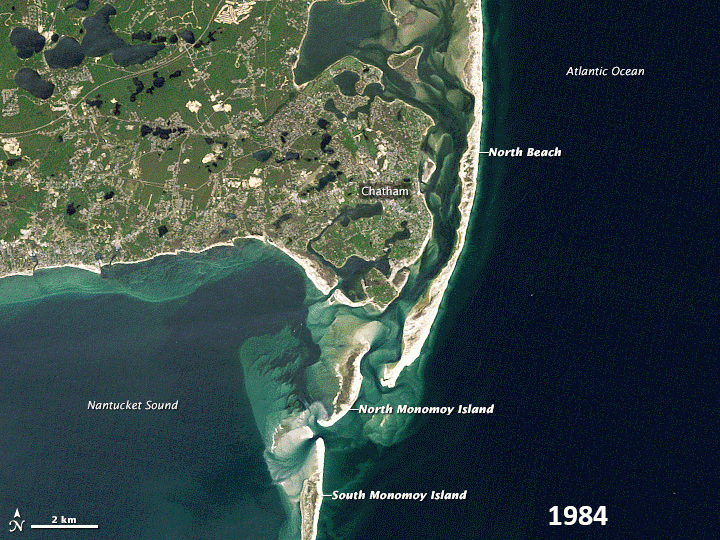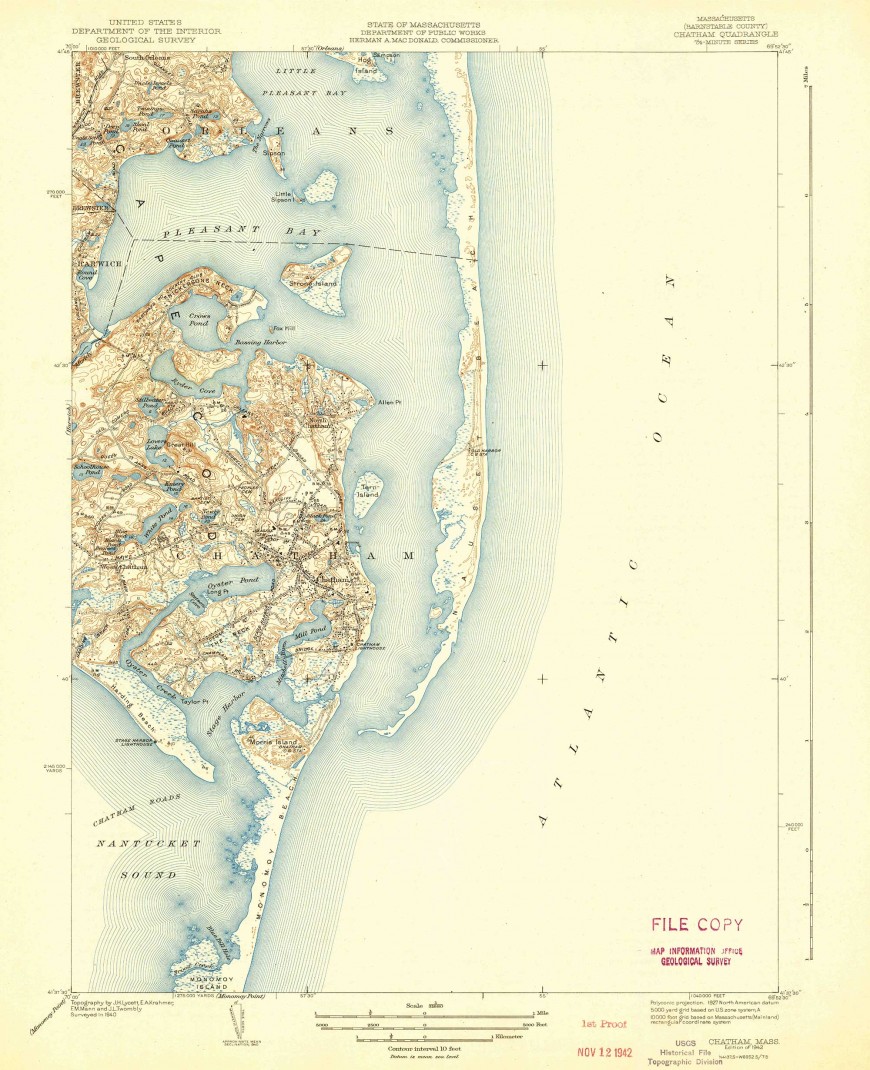Few places are as geologically dynamic as Cape Cod. The sands beneath our feet are always shifting, driven by water and wind. Cape Cod is a product of glacial deposition so it is geologically transient. In the summer it can be easy to forget the transitory nature of Cape Cod, but storms of the winter reveal this characteristic the waves turn yellow because they are heavily laden with sand. Sand eroded from Cape Cod’s eastern ocean side beaches and bars is driven by currents following the arm of the Cape to the north to Provincetown’s Race Point and to the south to Chatham and Monomoy. This results in some of the most dynamic systems on Earth, particularly in Chatham. Chatham’s barrier beach follows a cyclical pattern that repeats about every 150 years as sand migrates from the north to the south towards Monomoy Island (which sometimes is an island and sometimes is not). Inlets open and close, islands are formed, move, and are subsumed. The constant change makes Chatham’s waters difficult to navigate as channels move, shift, and disappear entirely. For thirty years NASA’s Landsats have been watching these changes occur and they are fascinating.
“I waited on deck and watched the death-throes of the suffocating sands under the relentless onset of the sea. The last strongholds were battered, stormed, and overwhelmed; the tumult of sounds sank and steadied, and the sea swept victoriously over the whole expanse.”
–Erskine Childers, The Riddle of the Sands
Source:
http://earthobservatory.nasa.gov/Features/WorldOfChange/cape_cod.php


